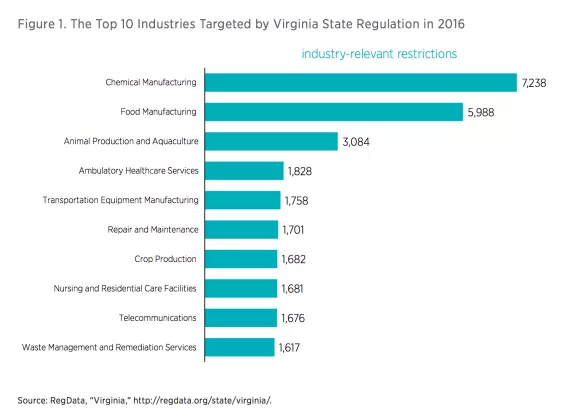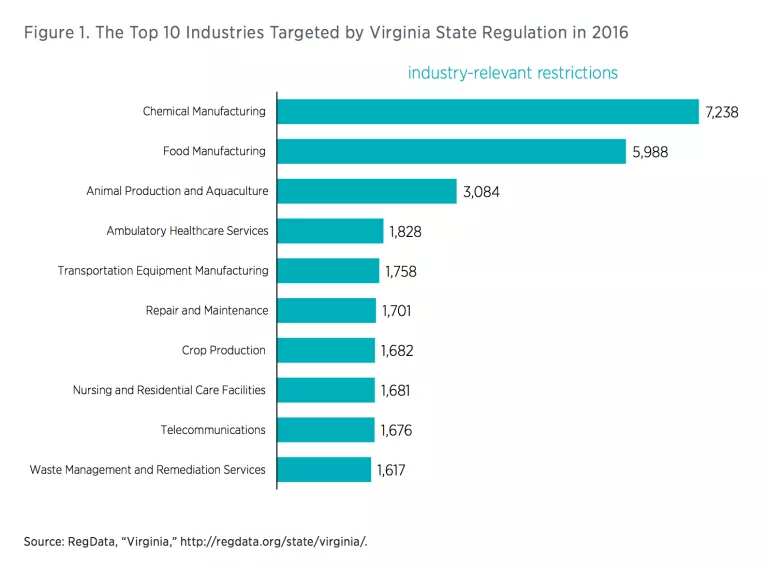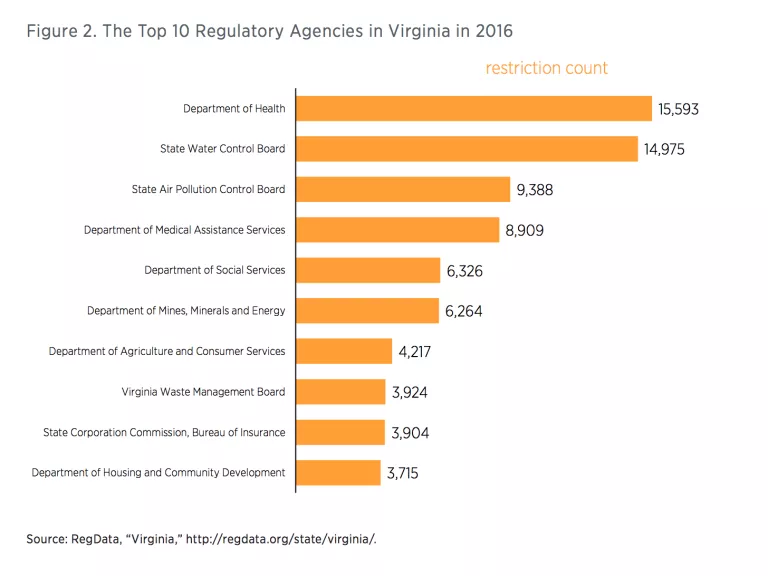If this snapshot of Virginia regulation in 2016 is a good indicator, then the states are also active regulators, suggesting the true impact of regulation on society is far greater than that of federal regulation alone.

It would take an ordinary person almost three years to read the entire US Code of Federal Regulations (CFR), which contained over 103 million words in 2012. The sheer size of the CFR poses a problem not just for the individuals and businesses that want to stay in compliance with the law, but also for anyone interested in understanding the consequences of this massive system of rules. States also have sizable regulatory codes, which add an additional layer to the enormous body of federal regulation. For example, the 2016 Virginia regulatory code, known as the Virginia Administrative Code (VAC), contained 24 titles comprised of over 32,000 unique sections of text.


Within the titles of the VAC, chapters are grouped based on the regulatory department or agency that writes the rules housed within those chapters. Figure 2 shows that in 2016, rules from the Department of Health, which are found in title 12, contained over 15,500 restrictions. This makes the Department of Health the biggest regulator in Virginia. Coming in a close second was the State Water Control Board, whose rules can be found in title 9, which has just under 15,000 restrictions.
Federal regulation tends to attract the most headlines, but it is important to remember that the 100 million words and over 1 million restrictions in the CFR are just the tip of the iceberg when it comes to the true scope of regulation in the United States. States like Virginia write millions of additional words of regulation and hundreds of thousands of additional restrictions. State-level requirements carry the force of law to restrict individuals and businesses just as federal ones do.
Researchers are only beginning to understand the consequences of the massive and growing federal regulatory system on economic growth and other measures of well-being in the United States. Meanwhile, the effects of state regulation remain largely unknown. If this snapshot of Virginia regulation in 2016 is a good indicator, then the states are also active regulators, suggesting the true impact of regulation on society is far greater than that of federal regulation alone.

